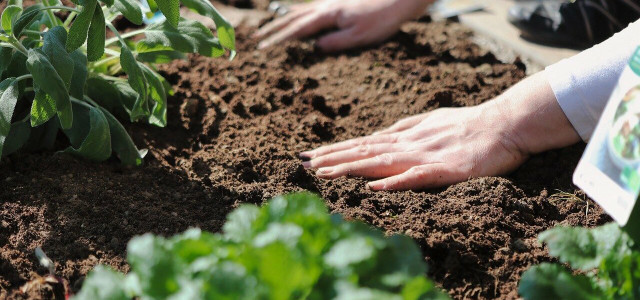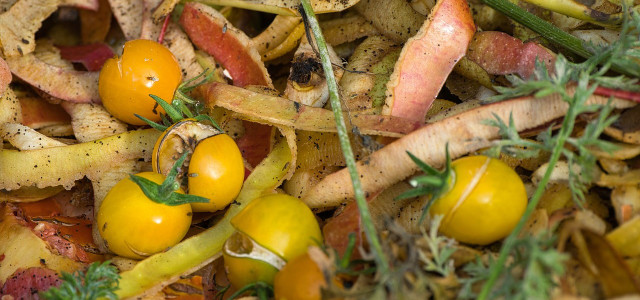Tired of trying to breathe new life into clay? Instead of giving up on your garden, read up on these six natural ways you can amend your clay soil and make your plants thrive.
Mentioning clay soil is likely to give nightmares to certain gardeners due to the challenges it poses: in rain it becomes a muddy mess, while in dry weather it can harden like a brick. Clay soils are named for the excess of microscopic clay particles, which tend to compact together and thus prevent penetration by water, air, or roots. While you may be able to till clay soils in order to create more air pockets, the next rain will likely press the soil back into its previous consistency. Introducing sand or fertilizers will also make little difference since these will compact together with the clay.
While you may be tempted to give up on gardening, clay soil has tremendous potential once it is amended naturally with a large enough amount of organic material. Biomass, once incorporated into clay soil, will break up the density of the particles and allow for more water, air, and root penetration. Additionally, clay soils have some properties which could be beneficial to gardening, such as a high capability to retain both water and plant nutrients. Once properly amended, you can reap the benefits (and crops) of both clay and the added organic matter.
Steps to Take When Amending Clay Soil
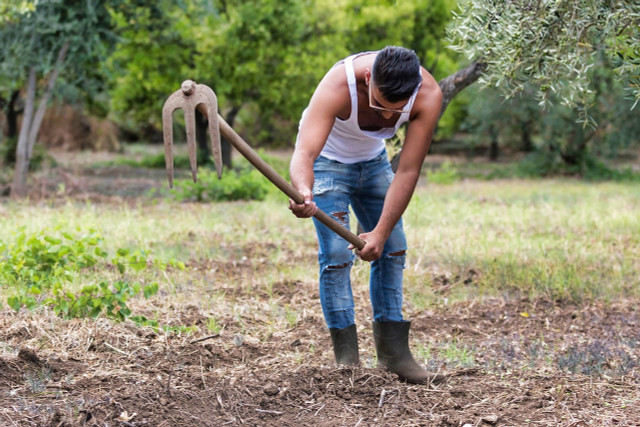
(Foto: CC0 / Pixabay / nicolagiordano)
Regardless of which type of soil amendment method you choose, the steps necessary to enrich your clay soil will be similar:
1. Before starting, plan out the soil amending process. It is less time-consuming and requires less effort to amend clay soil in the spring and plant immediately after. However, your results will often be better if you amend in the fall and plant the following spring. Once you settle on a time, avoid walking on the garden areas you intend to plant to prevent compaction. Only amend on dry soil, as it will be lighter and less prone to clumping as wet soil.
2. Aerate your soil. This can be done by either fully tilling the garden plot or focusing on a few areas to break up. In either case, you should aim to go as deep as you can so that future plant roots don’t hit a clay barrier right below the surface.
3. Add the soil amendment immediately after tilling. Try incorporating an equal or near equal amount of organic material to the clay soil you have just aerated by tilling it into the soil. It’s essential to do this immediately after aeration to avoid the freshly tilled soil from compacting due to rain.
4. This next step depends on the time of year. If it is spring, then you can plant directly into your newly amended soil. If it is fall, then you have a few options for how to further prep your garden for spring planting:
- Cover the plot with another layer of organic material to serve as a mulch. This will shelter the soil from harsh winter weather and slowly add biomass to the soil. It will also create a welcoming environment for beneficial microorganisms or earthworms, which will likewise add organic matter into the soil.
- Sow a temporary cover crop such as clover, oats, or winter wheat. These can grow quickly in autumn, die back during the winter, and then provide organic matter once tilled into the soil in the spring.
5. Remember, amending your clay soil is a process that can take several seasons for optimal results, especially if you don’t have large quantities of organic matter on hand. Simply repeat the steps above annually and watch your garden transform.
Method One: Amend Clay Soil with Compost
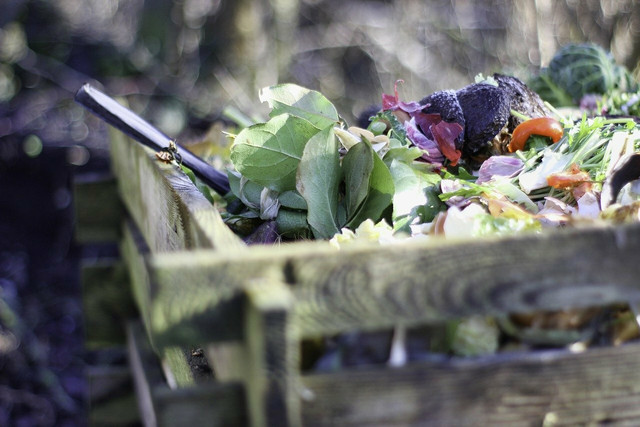


(Foto: CC0 / Pixabay / herb007)
Fully decomposed compost is the best way to amend clay soil. Regardless of what the original components were, compost is usually rich in carbon and nitrogen, allows for both water retention and drainage, and provides a mix of components that can help aerate soil. Compost should be fully broken down before incorporating into clay soil; fresh plant materials will take longer to decompose in the soil and will not be able to provide ready nutrients for plants in case of immediate planting.
Method Two: Leaf Mold
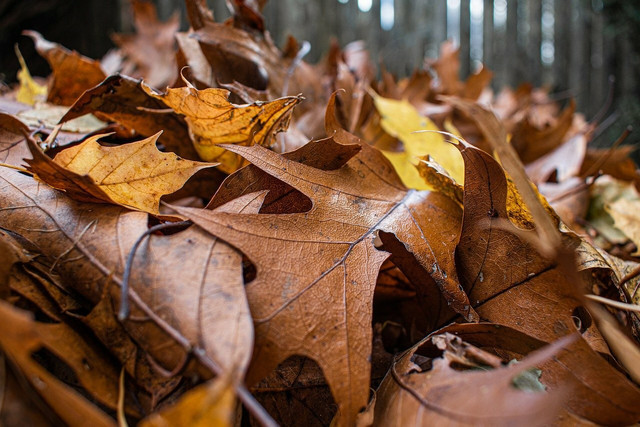


(Foto: CC0 / Pixabay / FotoXCapture)
Unlike freshly raked leaves, leaf mold consists of leaves that have already fully decomposed, much like compost. Not only does leaf mold provide a large amount of irregular organic matter to fluff up clay soil, but it is also said to contain twice as many minerals as manure. While freshly raked leaves can also be added to soil, they won’t be able to provide as many ready nutrients for immediate plant growth as leaf mold. On the bright side, fresh leaves do make an excellent mulch to add on top of the soil as they prevent water loss and release nutrients slowly as they decompose. Otherwise, you can always compost leaves separately and then add them to your garden later, which may be a speedier process.
Method Three: Manure
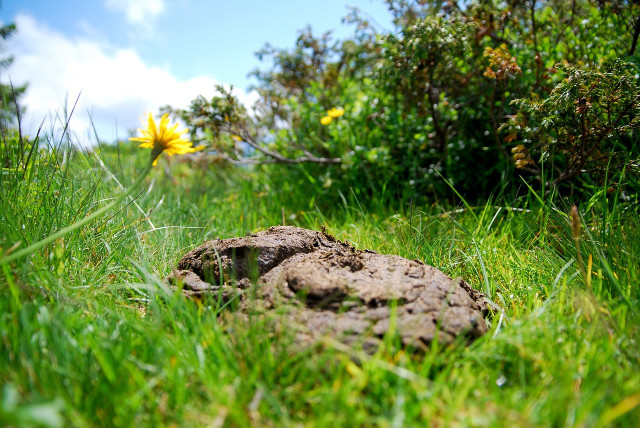


(Foto: CC0 / Pixabay / tvjoern)
Depending on the level of freshness, manure can be an excellent source of dense organic matter for clay soils. Like leaf mold, manure slowly releases nutrients into the soil to be used by plants, though it is particularly high in nitrogen content. In fact, fresh manure is so high in nitrogen that it will often kill plants that come in contact with it. For this reason it is best to make sure that manure is already properly composted by spring, otherwise it is best to add it in the fall.
Method Four: Amend Clay Soil with Straw
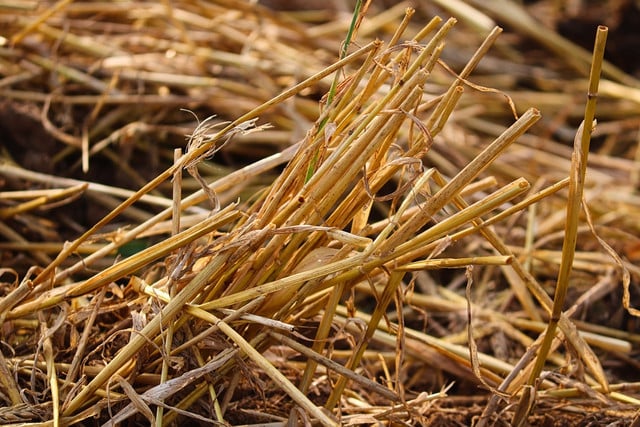


(Foto: CC0 / Pixabay / manfredrichter)
Due to its dry and woody composition, straw (or hay) will decompose slowly on its own, but much more rapidly once it is incorporated into soil. In fact, 80–90 percent of straw’s mass will fully decompose into ready organic material within a year of adding it to soil. The decomposition of fresh straw however, is an energy intensive process that will usually suck nitrogen out of the soil and thus inhibit plant growth. This is why straw should always be added the fall before planting season. For optimum results, straw should be added along with a high-nitrogen material such as manure to speed up decomposition.
Method Five: Grass Clippings
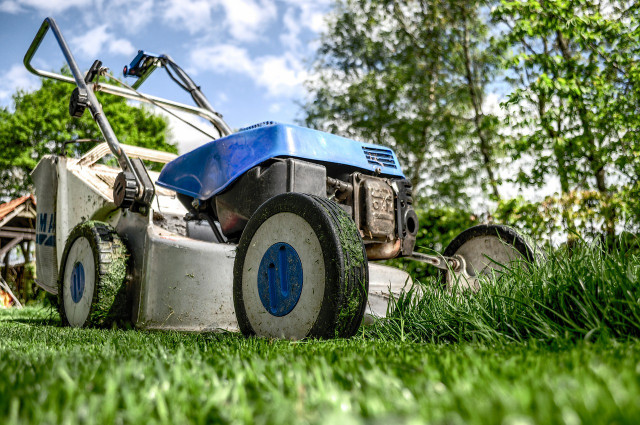


(Foto: CC0 / Pixabay / Skitterphoto)
Composted grass clippings offer a great way to use lawn waste, though they do pose a few risks if freshly cut. While they do provide ample biomass and nitrogen to clay soils, grass clippings tend to form dense mats and may even cause more soil compaction. While fresh grass clippings cannot provide immediate nutrients to plants, they do decompose rapidly and will provide a powerful shot of organic matter if added during the fall before planting.
Method Six: Planting Vegetables
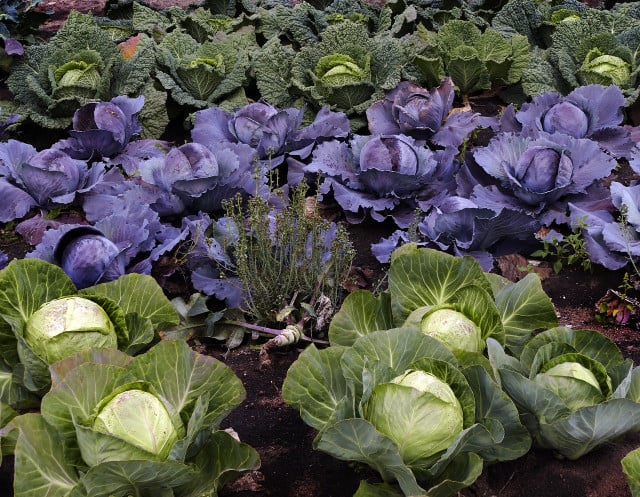


(Foto: CC0 / Pixabay / anaterate)
If you don’t have organic material on hand or cannot wait an entire season for it to form, you can simply plant your vegetables directly after tilling. The plants amend clay soil themselves by aerating the soil with roots, adding some organic matter once they are tilled into the earth, and providing you with some immediate vegetables. Leafy greens such as lettuce, kale, swiss chard, and cabbage do best in clay soil because they grow quickly and have shallow root systems.
Using only vegetables should not be a long-term solution however: they don’t provide much organic material and will produce sub-par harvests in unamended gardens. Make sure to amend your clay soil with compost or a layer of mulch after your veggies are done growing to maximize the next season’s yields. That way, your next crop will not only grow better, but will be more effective in enriching the soil.
Method Seven: Worms and Worm Castings
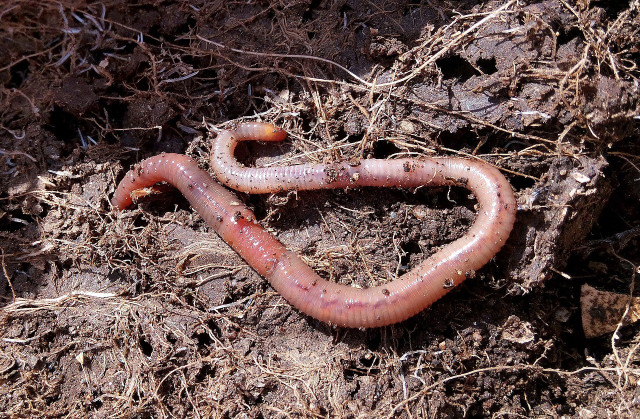


(Foto: CC0 / Pixabay / PortalJardin)
Worms and worm castings (their soil-like waste material) are perhaps the most efficient ways to amend clay soils. Worm castings are nutrient dense, help retain water, and are gentle enough to be applied to plants directly during planting season. Worms meanwhile help break down existing biomass in the soil while also aerating by tunneling. Unfortunately, worms and worm castings are often expensive and sold in small quantities that are impractical for entire gardens.To amend clay soil with worm castings, mix a tablespoon or two into the soil directly around a plant’s roots only. This targeted approach is best when combined with a more substantial source of organic matter.
What to Avoid Using to Amend your Clay Soil
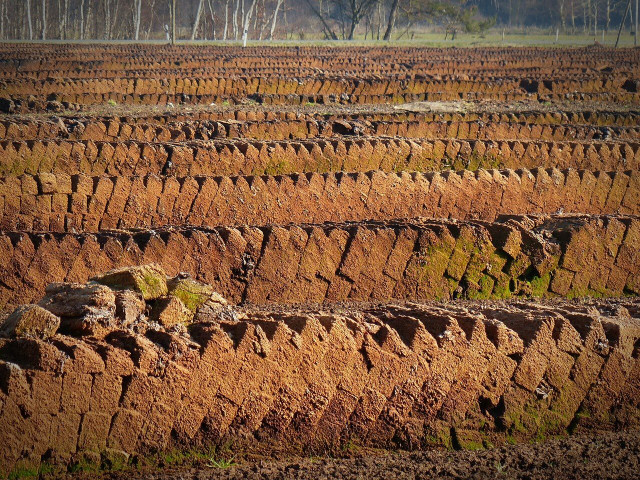


(Foto: CC0 / Pixabay / bernswaelz)
While most of organic materials above are able to amend soil quickly, affordably, and sustainably, some other materials should be avoided.
Wood chips, tree bark, or sawdust: These materials are packed with far more carbon than straw, meaning that they require excessive amounts of nitrogen to properly decompose. This may end up creating a nitrogen-free dead-zone in your garden that can prevent plant growth.
Peat: On the surface, peat is the perfect addition to clay soil. It is fluffy, retains water well, and provides a high mass of organic material. Unfortunately, peat is made up of plant materials that have slowly decomposed over thousands of years, and is therefore not a renewable resource. Furthermore, all peat is dredged up from peat bogs, which are delicate ecosystems hosting endemic species and also filtering a large portions of the world’s fresh water. Peat also contains 4-25 times more carbon than the equivalent area of forest, most of which is locked up under water. Once this carbon is mined and exposed to air, it immediately forms carbon dioxide, which is released into the air. This means that even while spread onto a garden, peat is emitting huge amounts of CO2 in to the atmosphere and thus contributing to climate change.
Sand: You may think sand provides some larger particles to break up the stickiness of clay, but in reality mixing the two together will create a concrete-like soil that will be even more difficult to plant in.
Read more:
- Checklist: How to Prepare Your Garden for Winter
- How to Use Eggshells as Fertilizer for Your Garden Plants
- The Best Fertilizer for Indoor Plants and When to Use It
Do you like this post?






